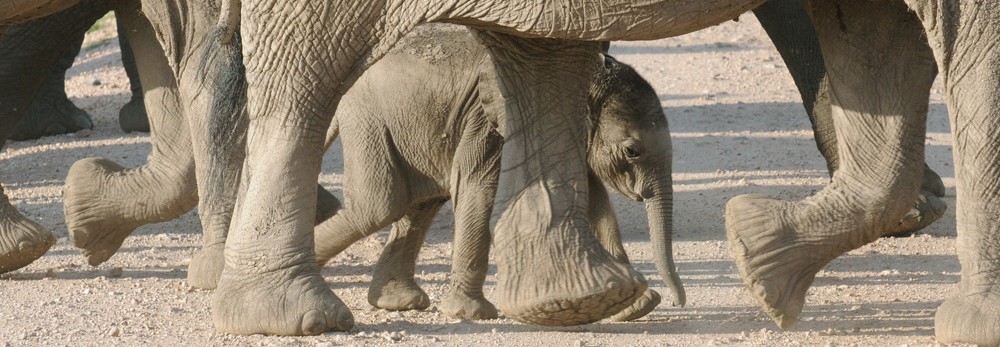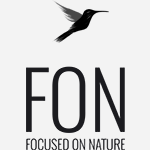
PARTICIPATE IN THE PROJECTS YOU CARE ABOUT:
USD 787,800 FOCUSED ON NATURE GRANTS TO WILDLIFE CONSERVATION PROJECTS SINCE 2009
$54,500 National Geographic Society (2013 – 2015)
$34,500 of the cumulative grants to the National Geographic Society supported a cover story in the National Geographic Magazine on dolphin intelligence by photographer Brian Skerry. The grant funded a 10-day expedition to the Bahamas to photograph researcher Denise Herzing and Atlantic spotted dolphins, and a 2-week expedition to Argentina in Spring of 2014 to photograph Orcas predating on seals on the beach, a phenomenon found nowhere else in the world. The story, published in 2014, is extremely timely given the current debate on dolphin captivity and the state of dolphin populations around the world.
An additional $20,000 was granted to the National Geographic Society in support of Brian Skerry’s story on the Great White Shark in May 2105.
$40,000 Strategic purchase of 2000 acres of humid subtropical forest in the Cuchumatanes mountains of northwest Guatemala (2015)
The Sierra de los Cuchumatanes in northwestern Guatemala is the highest non-volcanic range in Central America, and a hotbed of unique and threatened amphibians including the Finca Chiblac Salamander, Long-limbed Salamander, Jackson’s Climbing Salamander and the critically endangered and beautiful Morelett’s Black-eyed Treefrog. The mountain range, cloaked in lush forest that filters water into the azure Laguna Maxbal, is also an important bird area, supporting populations of three globally threatened species. The remoteness of the area has protected much of the forest to date, but increasing pressures from corporations looking to exploit the coffee-growing potential of the land place these unique forests at risk, and the area has been identified as one of the highest priorities for biodiversity conservation. This grant assisted local NGO FUNDAECO to acquire a 2000-acre property called Finca San Isidro, and protect an important tract of humid subtropical forest and its unique inhabitants. FUNDAECO already has a presence and a local office in the area, making them ideally placed to engage with local communities and ensure long-term sustainability of the project.
$26,000 Gunung Palung Orangutan Conservation Program (GPOCP), Borneo, Indonesia (2014 - ongoing)
Gunung Palung National Park, located in West Kalimantan, Indonesia, represents one of the most important blocks of orangutan habitat left in the world. Approximately 10-20% of all the Bornean orangutans are found there, and GPOCP has been working for almost 15 years to conserve this vital wild orangutan population. The FON grant was applied to the rebuilding of the Cabang Panti research station where research on wild orangutans is conducted; the Alternative Livelihoods Program which tackles one of the primary reasons for rainforest destruction —the slash and burn agriculture practiced by people surrounding the Park; and to cover part of the staff costs. Finally, a portion of the grant was applied to an exploratory trip to Sarawak, Borneo, to investigate an unstudied population of orangutans.
$13,000 Cape Leopard Trust to support further research on the Cape Leopard’s breeding and dispersal behaviour (2014)
Since its inception in 2004, The Cape Leopard Trust has become the authority on predator conservation in the Cape, and one of the leading authorities in South Africa. Cape leopards, along with the Arabian leopard, are the smallest leopards in the World. They are half the size of normal African leopards, and only occur in the Cape Mountains where they are threatened by farmer-predator conflict and habitat loss. Focused on Nature financed the purchase of 4 GPS leopard collars to help further research on the breeding and dispersal behaviours of these mountain leopards. The former includes basic reproductive and survival data, while the latter provides CLT with valuable insight into important corridors for conservation.
$10,000 Darewin/THINK project (2014)
Intelligent life on our planet abounds, especially in the ocean. Many species of dolphins and whales have brains that are larger than ours, and in many ways more evolved and complex. These animals may also share our capacity to communicate with one another in sophisticated ways that we are just on the cusp of understanding. DAREWIN’s mission is to better understand dolphin and whale click communication and perhaps, one day, make contact with these extraordinary animals.
$105,000 Wildlife Conservation Society to support Elephant Anti-poaching Efforts in Niassa National Park, Mozambique (2013 - ongoing)
Niassa National Park in Northern Mozambique and neighbouring Selous National Park in Tanzania support the largest remaining population of Savannah elephants in Africa, estimated at 13,000 individuals. Unfortunately, the Niassa-Selous landscape is also ground zero for elephant poaching: scientists reported that 3,000 elephants were killed for their ivory in the area in just one year. Focused on Nature's $30,000 grant to the Wildlife Conservation Society (WCS) is being applied directly to anti-poaching efforts in Niassa National Park, which is being co-managed by WCS and the Government of Mozambique. Specifically, the funds support the park rangers who risk their lives to protect these majestic and intelligent creatures.
$165,000 The Maasai Wilderness Conservation Trust (2012 - ongoing)
The Maasai Wilderness Conservation Trust works to protect the legendary ecosystems and astounding biodiversity of East Africa through conservation that directly benefits local Maasai communities.
$135,000 Wild dolphin Project to support research on wild dolphin societies in the Bahamas (2014 - ongoing)
Dr. Denise Herzing, Research Director of the Wild Dolphin Project (WDP), has been studying the same community of wild Atlantic spotted dolphins in the Bahamas for 30 years. Her research is well known and is grounded in science. Dr. Herzing is now moving into a new phase of research to “Crack the Code” of their communication system. We conserve what we love, and by understanding their communication and intelligence WDP hopes to create awareness of all sentient species and their place on Earth. The FON grant facilitated this new approach.
$50,500 Whale and Dolphin Conservation (2013 - ongoing)
Over the past 20 years, WDC has supported around 185 conservation field projects in over 40 countries, spanning all major ocean regions and relevant river basins. These projects include scientific work such as abundance estimation, population dynamics and behavioural studies, research on threats and threat mitigation, as well as a broad range of conservation initiatives such as encouraging government authorities to designate areas of marine protection; working with local law enforcement agencies; and developing alternative fishing activities to reduce bycatch. WDC is acutely aware that such programmes can only be successful with the full support and participation of local people and aims to identify and work closely with local scientists, conservationists, educators and other community members in each region, in order to ensure long-term solutions for both cetaceans and their often shared, environment.
$15,000 International League of Conservation Photographers for the Yucatan Rapid Assessment Visual Expedition (2009)
Focused on Nature's $15,000 grant to the International League of Conservation Photographers for the Yucatan Rapid Assessment Visual Expedition facilitated 30 world-renowned photographers to produce a comprehensive visual library of the Yucatan Peninsula in Mexico and all the biological diversity it supports. Photographers included: Paul Nicklen, Brian Skerry, Christian Ziegler, Joe Riis, Klaus Nigge, and Daniel Beltra. In addition to producing the visual library, which was shared with local non-profit organisations across the Yucatan free of charge, the grant sparked four long-term conservation photography projects : one for Klaus Nigge, which resulted in a story in National Geographic Magazine on Flamingoes; two for Brian Skerry, one which resulted in a story in National Geographic Magazine on the Mesoamerican Reef, and another in Smithsonian Magazine on Whale Sharks; and one for Paul Nicklen, which resulted in a National Geographic Magazine story on Cenotes.
$40,000 THE DAVID SHELDRICK WILDLIFE TRUST (2016 - ongoing)
.
$20,000 DOMINICA SPERM WHALE PROJECT (2017)
.
$30,000 FINS ATTACHED (2017 - ongoing)
.
$18,800 FAUNE ALFORT (2016 - ONGOING)
.
$10,000 CHARLES DARWIN FOUNDATION (2018 - ONGOING)
.
$10,000 THE MANTA TRUST (2018 - ongoing)
.
$10,000 RHINO PRIDE FOUNDATION (2018 - ongoing)
.
$10,000 TURTLE CONSERVANCY (2018 - ongoing)
.
$10,000 RAINFORESTS: GLOBAL WILDLIFE CONSERVATION (2018 - ongoing)
.
$10,000 OCEANA (2018 - ongoing)
.
$5,000 WOLVES OF THE ROCKIES (2019 - ongoing)
.
